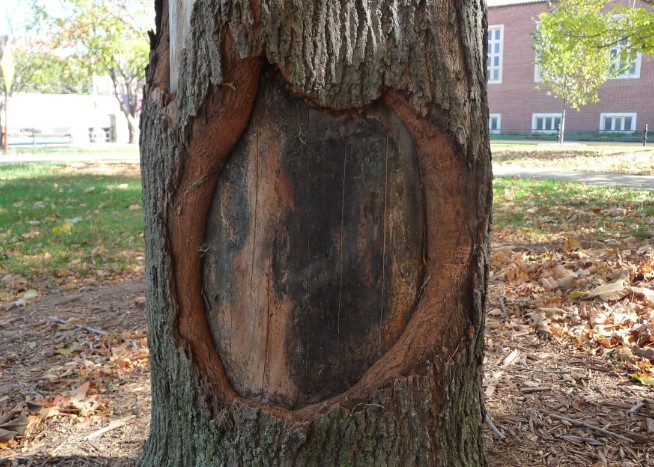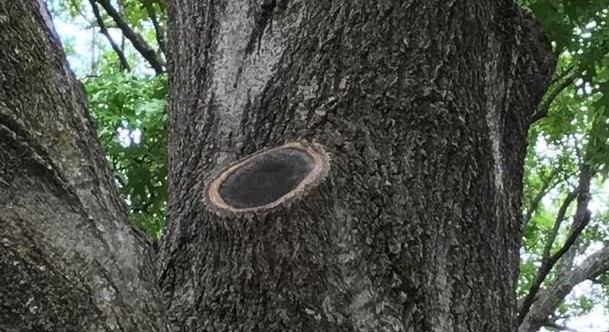-
It’s not surprising that trees are often injured. Tree wounds, which include anything that damages the living tissue responsible for transporting nutrition and breaks the bark, can be a concern. how to treat tree wounds? becomes a vital question to address in ensuring your trees remain healthy and thriving despite such injuries.
In some cases, it is impossible to prevent the wounds from occurring. Trees are able to heal and contain their own wounds. There are a few things that you can do to either heal or improve the appearance of the wound if the tree trunk has been injured.
What is a tree wound?
Tree wounds are any injuries to the tree which breaks the bark. Tree bark, like human skin is designed to keep pathogens and bacteria out.
Wounds that puncture the bark will damage the cambium, a thin layer of vascular tissue which is vital to the movement and nutrition of water throughout the tree. The tree will recover if the bark has not been damaged by more than 25%. The more bark that is removed from the trunk, the greater the risk of the tree dying. How to treat tree wounds? is an essential knowledge to manage such situations effectively. Contact a certified arborist in your area to find out the best time and methods to treat the wounds on your tree.
How to Identify a Tree Wound
If you notice any damage to the bark of your tree, whether it’s a scrape or a burn from lawn equipment, or if there are holes caused by boring insects or other pests, then this is indicating that the tree has been damaged. Tree bark and skin heal in a similar way, so you can tell if your tree has been injured by the way it contains its wounds. This is similar to a callus or scab on your skin.
For trees, these containment methods are called Barrier Zones and Compartmentalization.
Barrier Zones
Trees will try to prevent further injury by creating chemical and barriers in order to close damaged tissue. The infection will not spread if the tree creates a barrier quickly and effectively. Trees that are actively growing can cope with decay quite successfully.
Compartmentalization
When trees are injured, they have an unusual defense against fungi. forms “callus” tissue at the edge of the wound. This new wood creates a protective barrier to prevent infection spread and produces special compounds within the wood cells to set up a wall that isolates the infected region.
This protection process is called compartmentalization. Once the walls are compartmentalized, decay and discoloration cannot spread unless they are somehow broken.
How to treat a tree wound
Scribing Wounds
The bark of trees is often torn when the wound occurs. The compartmentalization begins by “scribing”, or cutting, dead and damaged bark from the wound using a sharp knife. This will encourage the healing process, and lessen the rot. Be careful not to expose too much live tissue by removing healthy bark.
Pruning Wounds
Properly pruned trees are better able to heal wounds and resist infection. The best time to trim trees is in the winter, when they are dormant and less likely to be infected.
The tree is put under stress when you prune because it creates wounds and possible entry points for diseases. Pruning dead, dying and broken branches, as well as low, crossing or dangerous branches, is important. If you cut limbs flush to the trunk, the area will be larger and the wound is more likely to decay. Do not leave any stubs. Make sure your cuts are clean and smooth.
Cavity Fillings and Wound Dressings
In most cases it is better to let the wounds heal naturally. Filling in a cavity of a tree does not seem to have any positive impact on the health of the tree. The filling of large holes is usually done only for cosmetic purposes, as the fillings can prevent the callus tissue folding into the wound.
Filling or wound paints are not recommended as they do not stop decay. They can also have detrimental effects to the tree if not left to heal. Wound dressings may cause the following issues .
- It prevents the growth of fungi like oak wilt and encourages drying.
- Inhibits the formation of callus or wound wood tissue
- This prevents the compartmentalization of goods
- Food source for pathogens
What Causes Tree Wounds?
Most tree injuries are caused by operating equipment too close to a tree’s trunk. Gardeners who use lawnmowers and other equipment can cause serious damage to trees. Nature can also cause damage to trees. Tree health can be affected by storms, fire and wildlife.
This is a list of all the possible suspects.
- Animals and other wildlife
- Insects
- Fire
- Ice
- Storms
- Lightning strikes
- Other equipment such as lawnmowers, edgers and pruning shears
- Automobiles
- Construction equipment
- Herbicides containing glyphosate at sub-lethal levels
How to Prevent Tree Wounds
The most important thing you can do to avoid tree wounds, is to ensure your trees are healthy. While pruning can cause tree wounds to occur, removing broken or diseased limbs will limit damage as long as you don’t top the tree or leave any pruning stubs.
Use Integrated Pest Management to control pests, water and fertilize trees. Keep a layer of mulch on the roots.
FAQ about treating tree wounds
What can you use to seal a cut on a tree?
Some of these products are made from asphalt and petroleum. Alternative natural tree sealers are made of collagen and aloe.
How long does it take for a tree wound to heal?
The healing process can take up to 15-20 years. The compartmentalization is a fast and effective process within the tree. It can take up to three years.
Can you bandage a tree branch?
A cloth bandage may be able to solve your problem if you accidentally removed a large amount of bark, or a deep wound without removing the branch. Wrap the affected area with burlap, or another breathable fabric. Secure it with twine. This method only works if the bark of the trees near the affected area are still wet.
When to Call a Tree Care Professional
You might find it easier to hire a landscaping professional if you are not sure of your abilities to properly care for your injured tree or broken branches.
Visit Arborwise Tree Serivces to find a landscaping contractor in your area who can handle your tree, shrub and lawn care needs.
Choose Arborwise Tree Service
When it comes to caring for your trees, Arborwise Tree Service is the perfect choice. We are a professional tree service company that has been in business since 1993 and we specialize in providing expert tree care services to both residential and commercial customers.Our team at Arborwise Tree Service is available to help you with tree care challenges of any kind. Contact us today for your quote on your lawn services such as:
At Arborwise Tree Service we understand the importance of properly maintaining your trees so they can remain healthy for years to come. With our comprehensive range of services you can rest assured knowing that your trees will receive proper attention throughout every season so they stay strong during winter storms or summer heat waves. We also provide emergency storm damage cleanup as well as removal when necessary – making us an ideal partner year-round!
Call Us Now
In addition to our expertise in tree maintenance services, at Arborwise Tree Service we strive for customer satisfaction by offering competitive rates with no hidden costs or surprises along the way – just quality workmanship backed by a 100% satisfaction guarantee! Our team is committed not only to providing excellent service but also educating each customer about their particular species’ needs so everyone feels informed throughout the process too!
So if you’re looking for reliable professionals who are dedicated to helping keep your landscape beautiful all year round then look no further than Arborwise Tree Service – where quality meets affordability every time! Call us today!
Call (727) 481-8081 to request more information or make an appointment
Copyright 2015 | Login






Get in touch, we want to hear from you
Send Cancel